- Home
- Knowledge library
- Stock judging: finished beef and beef carcase
Stock judging: finished beef and beef carcase
When stock judging beef cattle or carcases, the points below should help you to understand what to look for.
Find out more about stock judging
What to look for in finished beef
Always look for length, width and depth of fleshing throughout.
Above and below the dotted line:
- As much as possible above the line – good-quality, expensive cuts
- As little as possible below the line – lower-quality, cheaper cuts
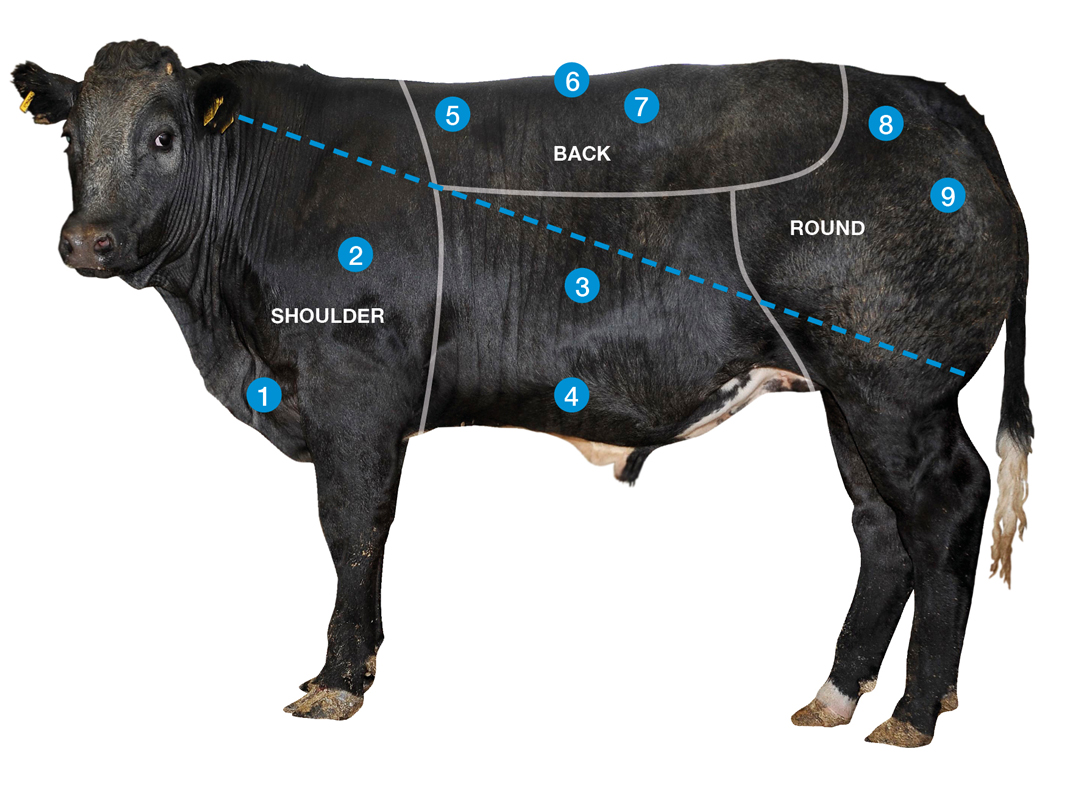
|
Good |
Poor |
|
Light |
Broad, full or wasteful |
|
Good |
Poor |
|
Broad and deep |
Lacking flesh |
|
Well-developed |
Narrow |
|
Well-fleshed |
|
|
Good |
Poor |
|
Well-sprung and trim |
Soft and fat |
|
Good |
Poor |
|
Clean |
|
|
No waste |
|
|
Parallel with top line |
|
|
Good |
Poor |
|
Full-fleshed |
Weak, lacking flesh |
|
Good |
Poor |
|
Long |
Short |
|
Wide |
Narrow |
|
Good |
Poor |
|
Long and deep |
Lacking flesh |
|
Full |
Narrow |
|
Good |
Poor |
|
Well-rounded |
Shallow and concave |
|
Broad |
Pin bones prominent |
|
Good |
Poor |
|
Well-fleshed in first and second thighs |
Flat and shallow |
|
Muscle development carried well down to the hocks |
Narrow, lacking width |
|
|
Lacking muscle development |
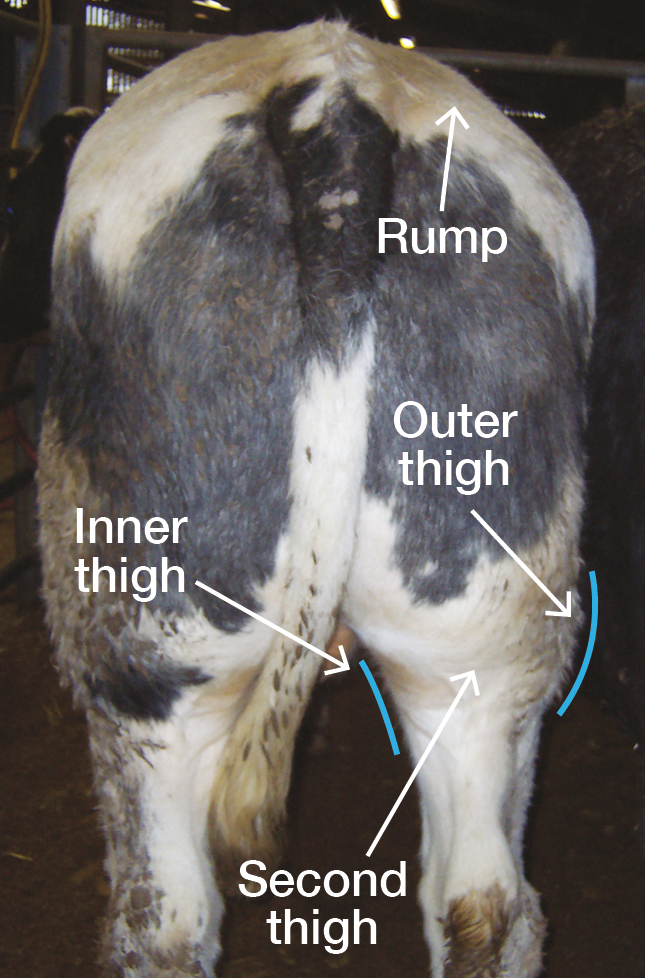
Where to start with beef carcase
Stand back and have a good look from a distance at the group. Get a general impression of the carcases to judge, i.e. appearance, type, etc. Identify if heifer, steer or bull carcases.
Be methodical. Start at:
- The round (second thigh, top piece and rump)
- Then back (loin and forerib)
- Then shoulder
What to look for in a beef carcase
A. Second thigh
B. Top piece
C. Rump
D. Loin
E. Forerib
F. Shoulder
Proportion of hindquarters to forequarters – well-fleshed hindquarter to light forequarter is preferable.
Colour, quality and texture of fat
|
Good |
Poor |
|
White/creamy |
Yellow |
|
Firm |
Oily |
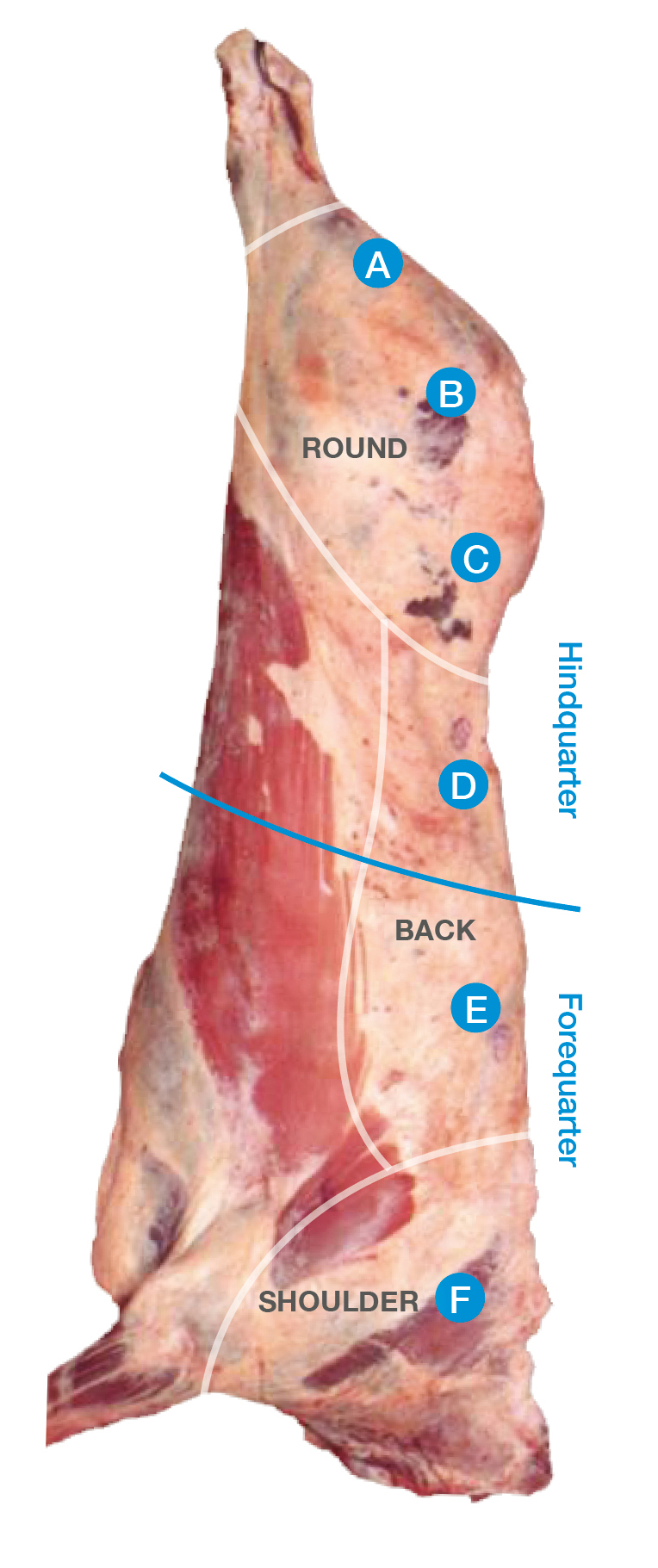
Points to look for in a beef carcase
Conformation
The round (A, B and C)
Shape of round.
- Good: Well-rounded, convex in profile, fullness of flesh through the second thigh, top piece and rump
- Poor: Narrow, concave in profile
The back (D and E)
Thickness of back – in proportion to the size of the carcase, should be broad and thick.
Depth and area of eye muscle – deep and broad loin with fleshing carried well around the ribs.
The shoulder (F)
Thickness of shoulder area – look for neat, compact shape that blends well with forequarter.
Shape of forequarter – compact and well-fleshed while still being well balanced in proportion to the hindquarters.
Fat
Distribution of fat throughout carcase – there should be a light cover of fat, evenly distributed with no patchiness or heavy fat deposits internally or externally that require trimming.
Amount of fat over eye muscle – Even distribution, thin layer (4–8 mm), covering the external surface, with light deposits intramuscularly.
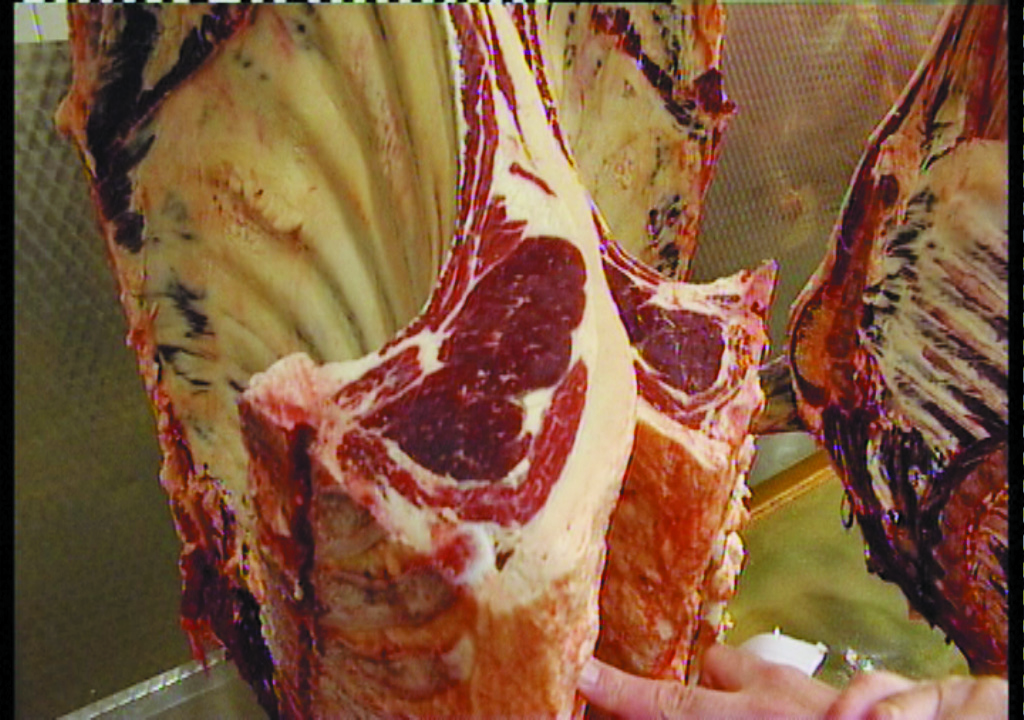
Example of a beef carcase which has too much fat.
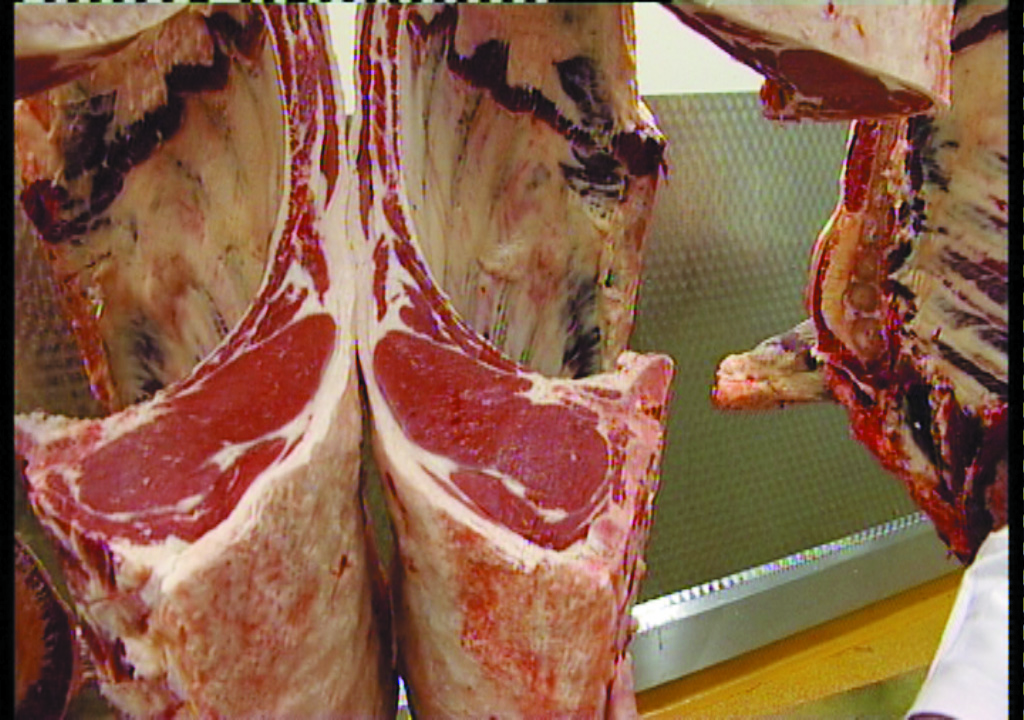
Example of an ideal beef carcase.
Useful links
Download our guide to stock judging
If you would like a hard copy of A guide to stock judging please contact publications@ahdb.org.uk or call 0247 799 0069.
Topics:
Sectors:
Tags:

